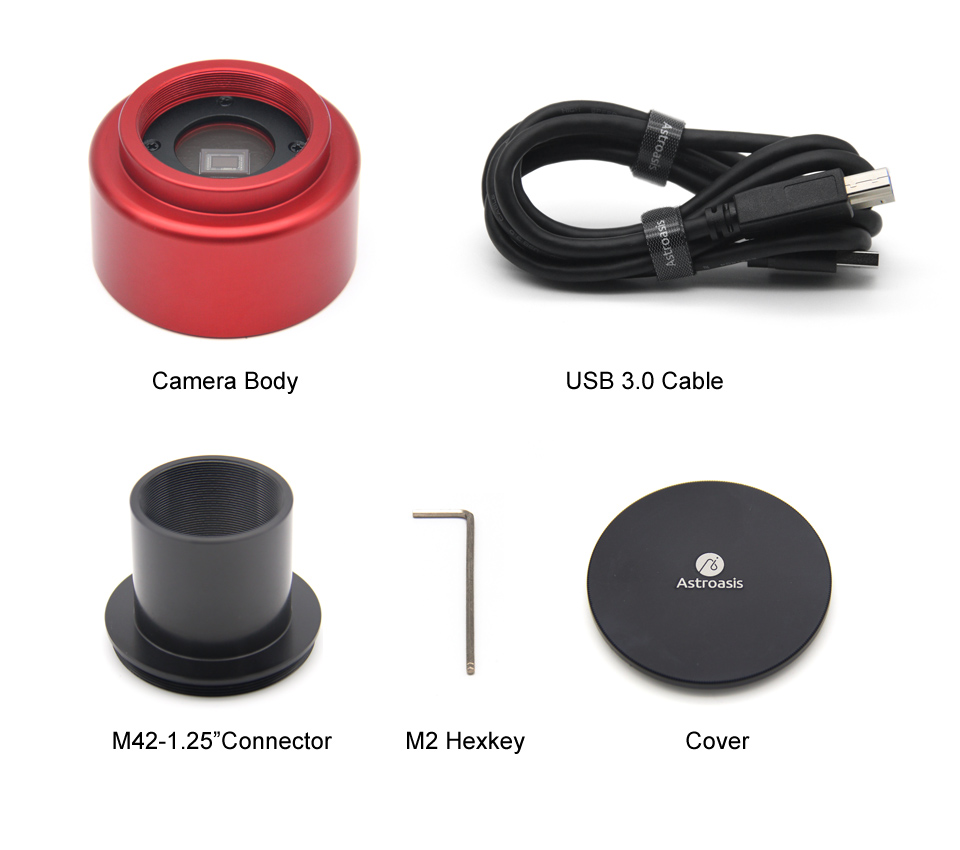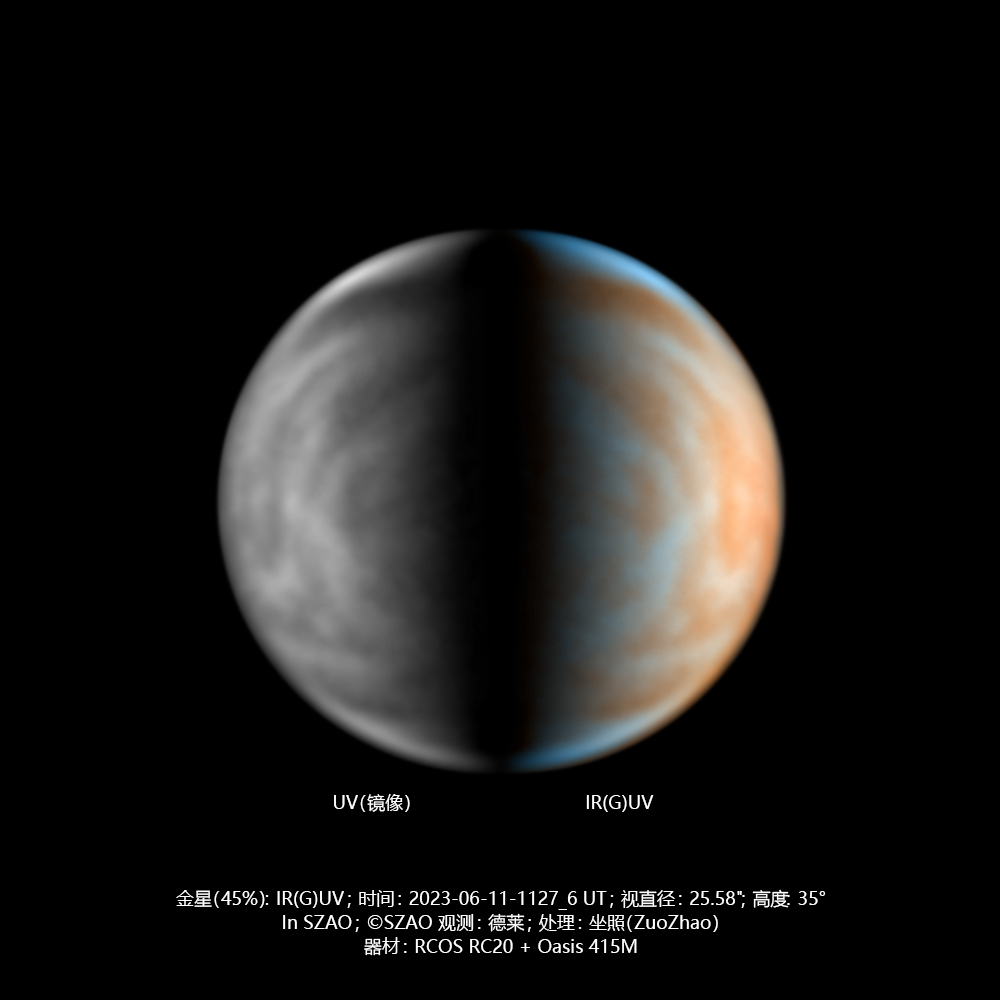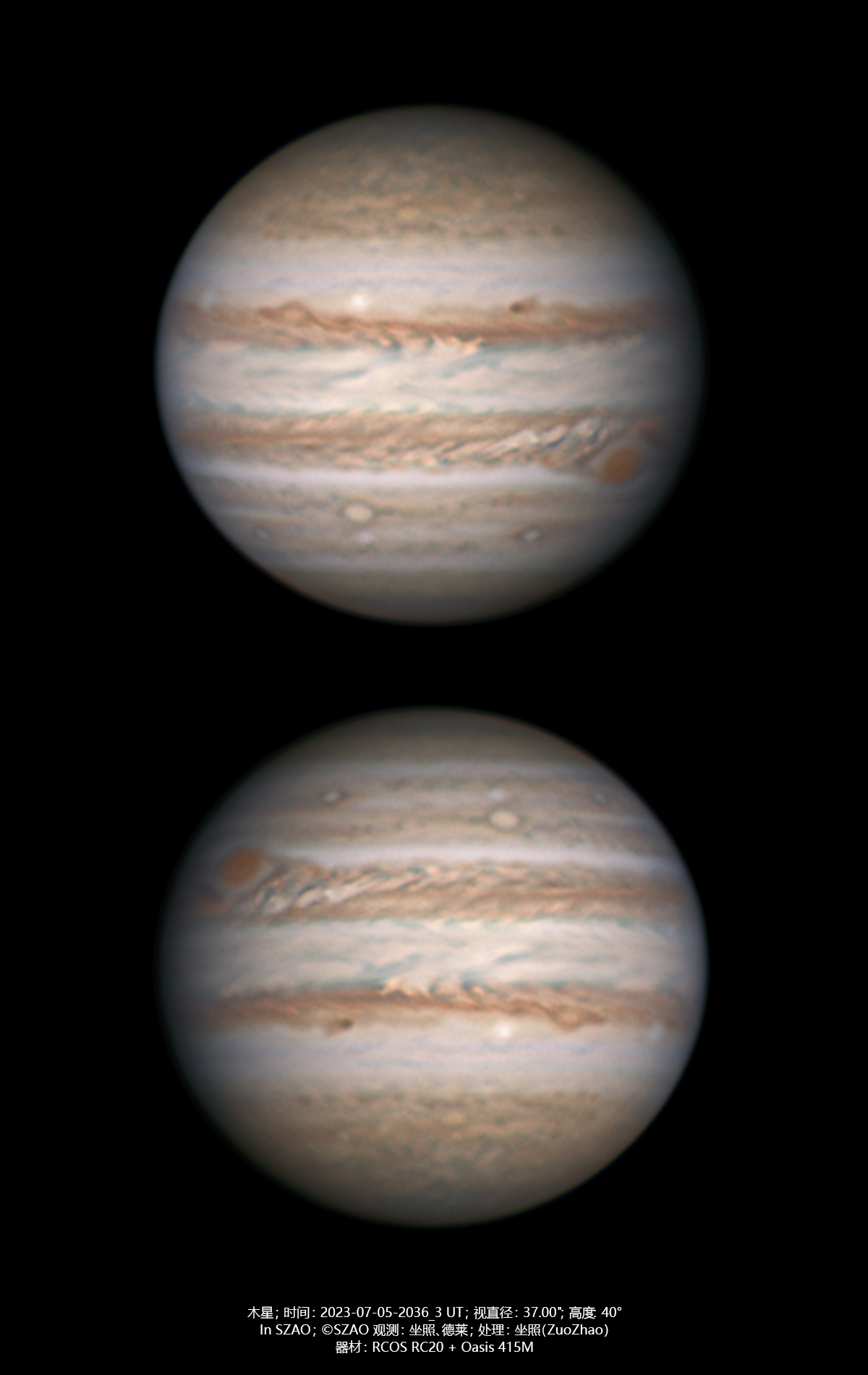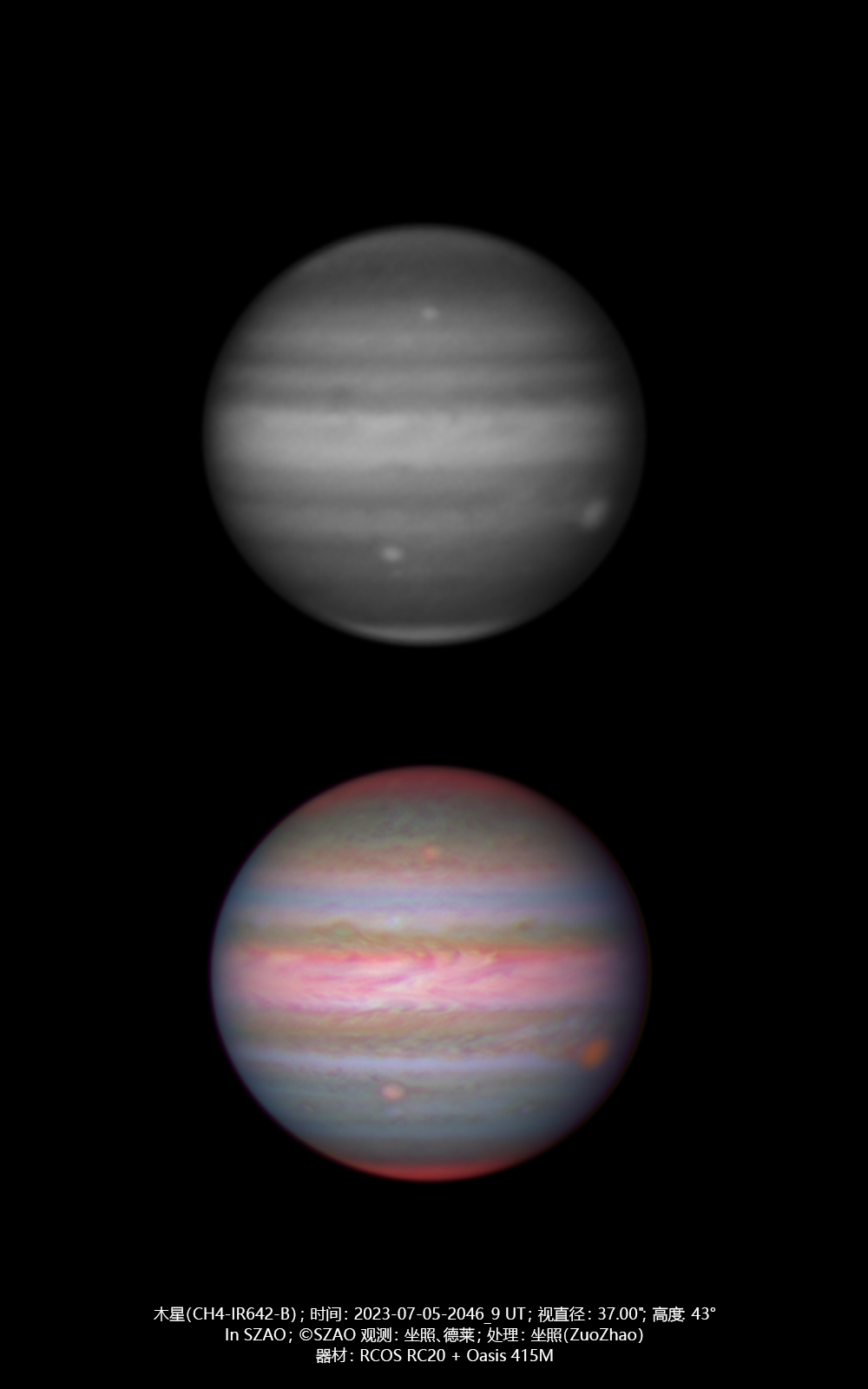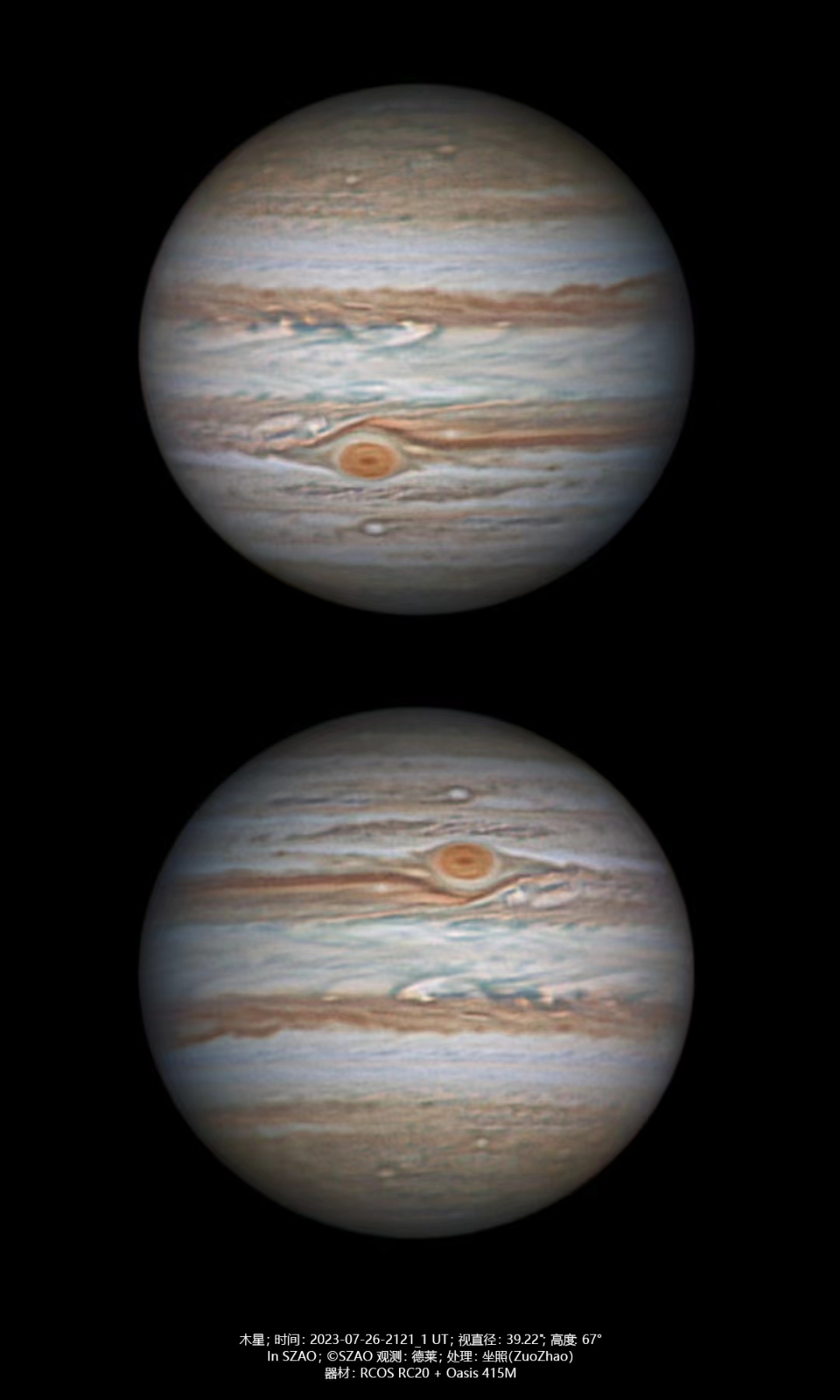
Oasis 415M Mono Planetary Camera
Sony IMX415 1.45μm pixel size, back-illuminated high sensitivity monochrome image sensor, rear focus plane adjustment feature, USB 3.0 interface
Description
Oasis 415M camera is one of our family of planetary cameras. This series of cameras are designed and developed with the goal of making it easier and more comfortable for users to take stunning astrophotography pictures with these cameras.

Oasis 415M has a Sony IMX415 image sensor, which is back-illuminated and has 1.45μm ultra-small pixel cells. The sensor is 1/2.8 inch. The diagonal length is 6.4mm, and the maximum image resolution is 3840x2160. The parameters of the product are shown in the following table.
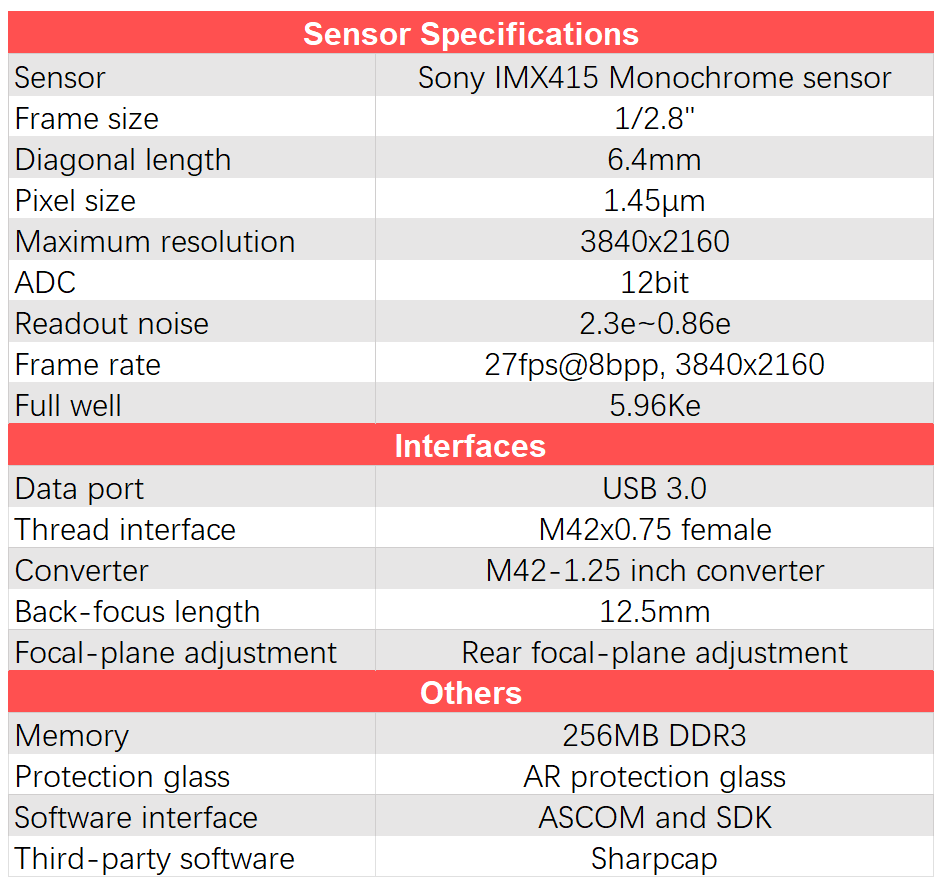
Notes:
1. Data such as readout noise, full-well etc are shown in the charts later in this page.
2. Refer to the following table for frame rates.
3. The camera is compatible with any third-party software that supports ASCOM interface, such as SGP, MDL, NINA, etc. It is also compatible with Sharpcap which calls the camera SDK directly for planetary capturing purpose.

The camera features a Sony IMX415 image sensor with an ultra-small 1.45μm pixel cell. In planetary astrophotography, planetary cameras with a 2.9μm pixel-cell are usually used. With large aperture and long focal length telescopes at about F/10 focal ratio plus 2x Barrow we can achieve ultimate sampling rate. If you use a camera with 1.45μm cells, you can achieve the same sampling rate as above without using 2x Barrow. Capturing without using Barrow brings many benefits:
1、Don't need to spend money on Barrow
2、Don't need to worry about dusts on Barrow
3、Don't need to worry about the loss of optical quality caused by Barrow
4、More easy for connecting capturing equipments
5、A larger field of view can be obtained in the same sensor frame size
6、The total number of frames can be greatly reduced for mosaic capturing in the same sensor frame size
7、It's easier to find the target
8、Without barlow it's more easier to capturing with the best back-focus
If you want to change the sample rate while capturing, it is also more convenient to change the sample rate by changing the camera than to change the Barrow.
Below are pictures of the Moon and Sun taken with Oasis 415M, using a SkyRover 102 APO Pro telescope with 715mm focal length. No Barrow was used during capturing.
Telescope: SkyRover 102 APO
May 8, 2022
Photo by Frank Chen
Telescope: SkyRover 102 APO
May 23, 2022
Photo by Frank Chen
Below are more pictures with other telescopes.
Telescope: SkyRover 130 APO
8-panel Mosaic
May 1, 2023
Photo by Xiao A
Telescope: Meade LX200
Jun 5, 2023
Photo by Delai
Telescope: RCOS RC20
Jun 11, 2023
Captured by Delai
Processed by ZuoZhao
Telescope: Meade LX200 14"
Photo by Delai
Telescope: RCOS RC20
July 5, 2023
Captured by Delai
Processed by ZuoZhao
Telescope: RCOS RC20
July 5, 2023
Captured by Delai
Processed by ZuoZhao
Telescope: RCOS RC20
July 5, 2023
Captured by Delai
Processed by ZuoZhao
Telescope: RCOS RC20
July 26, 2023
Captured by Delai
Processed by ZuoZhao
Like our other planetary cameras, Oasis 415M has the following features.
Stable and smooth data transfer
The camera has 256MB DDR3 memory. With the use of DDR3 cache, pipeline and flow control are realized in hardware to avoid data loss or re-transfer, so that the data transfer is very smooth, stable and efficient. Also the frame rate can be extremely high. Even under USB 2.0, image data can be transferred stably.
Rear focal plane adjustment
Our planetary camera features a built-in focal plane adjustment function. It is a rear focal plane adjustment mechanism, that is, the focal plane can be adjusted by using a hex wrench to adjust screws at the back cover of the camera. The benefits of this focal plane adjustment mechanism are obvious:
1、Users do not need to purchase and install additional focal plane adjustment devices, which saves costs, eliminates the installation steps of such devices, and does not occupy back-focus space because of these devices;
2、The built-in focal plane adjustment device only needs to bear the weight of the image sensor board, and does not need to bear the weight of the entire camera. This makes the focal plane adjustment device very lightweight, more stable, and easier to adjust;
3、The adjustment device is inside the camera, avoiding potential light leakage caused by focal plane adjustment device;
4、As the focal plane can be adjusted from the rear of the camera, there is no conflicts with other parts. So the focal plane can be adjusted in a more comfortable way. And it can be adjusted in the way by observing the image taken in real time;
5、Adjustment is simple with only one wrench and up to 3 screws
The rear focal plane adjustment function is achieved by the combination of three screws, sensor daughter board mounting bracket and three built-in springs, making the solution simple and effective. The schematic diagram of the structure of the adjustment function is shown in the figure below.
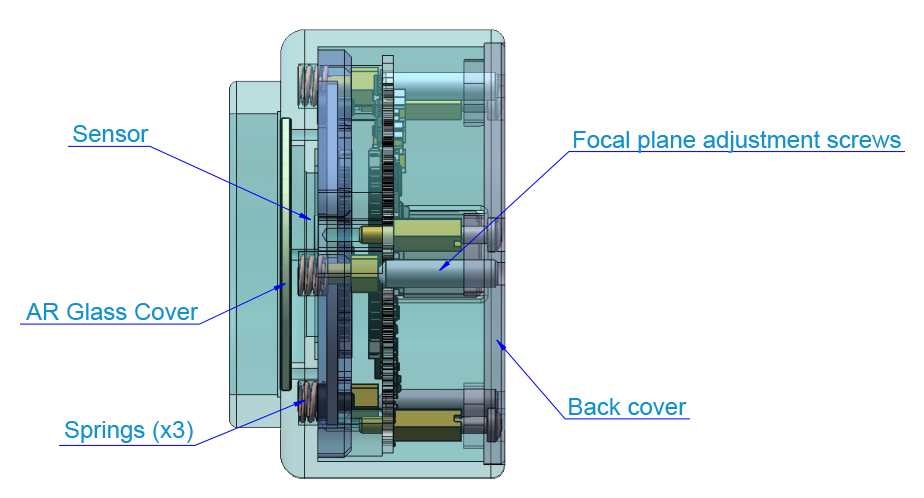
Schematic diagram of the focal plane adjustment mechanism
The focal plane adjustment screws at the back cover is shown in the figure below.

Rear focal plane adjustment is the standard feature of all our planetary cameras.
Simple design principles
The sensor board is designed in a simple and clean way.
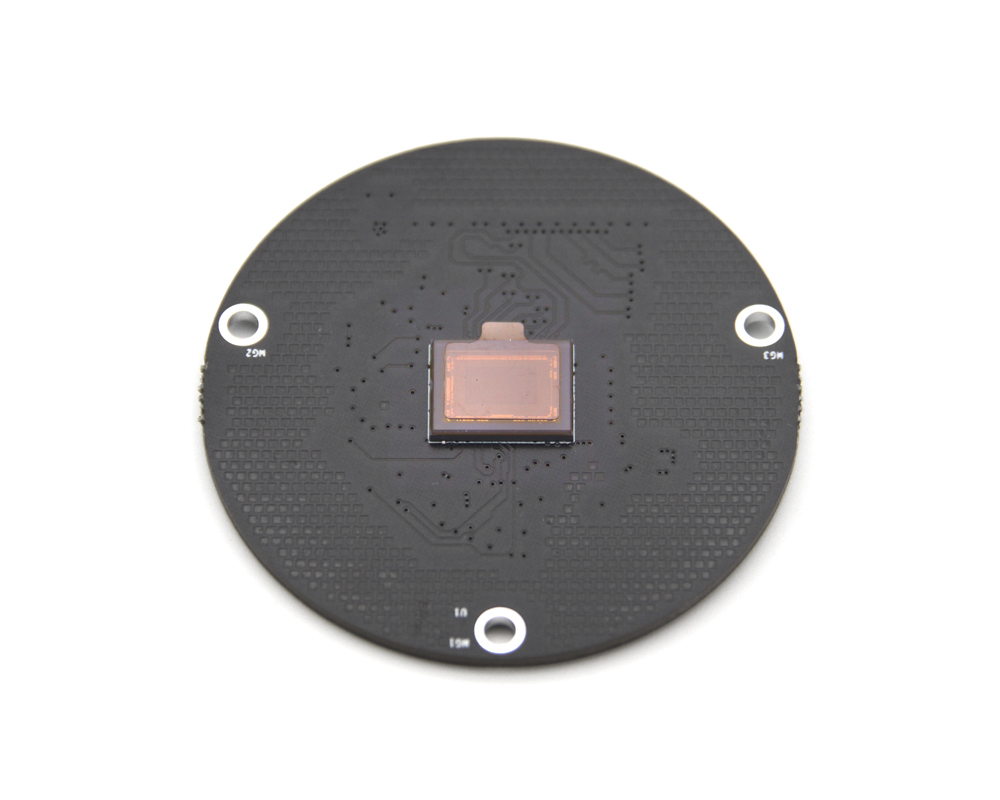
Hardware and software code follow the design principle of simple and efficient. The executable code of the software SDK on Windows is only about 100KB.
Its appearance is clean and smooth. Unnecessary elements are removed. The locking screw and focal plane adjustment screw on the back cover are embedded in the cover. Black screws with red housing look elegant.
The camera is equipped with an M42 cover which is made of aluminum alloy.
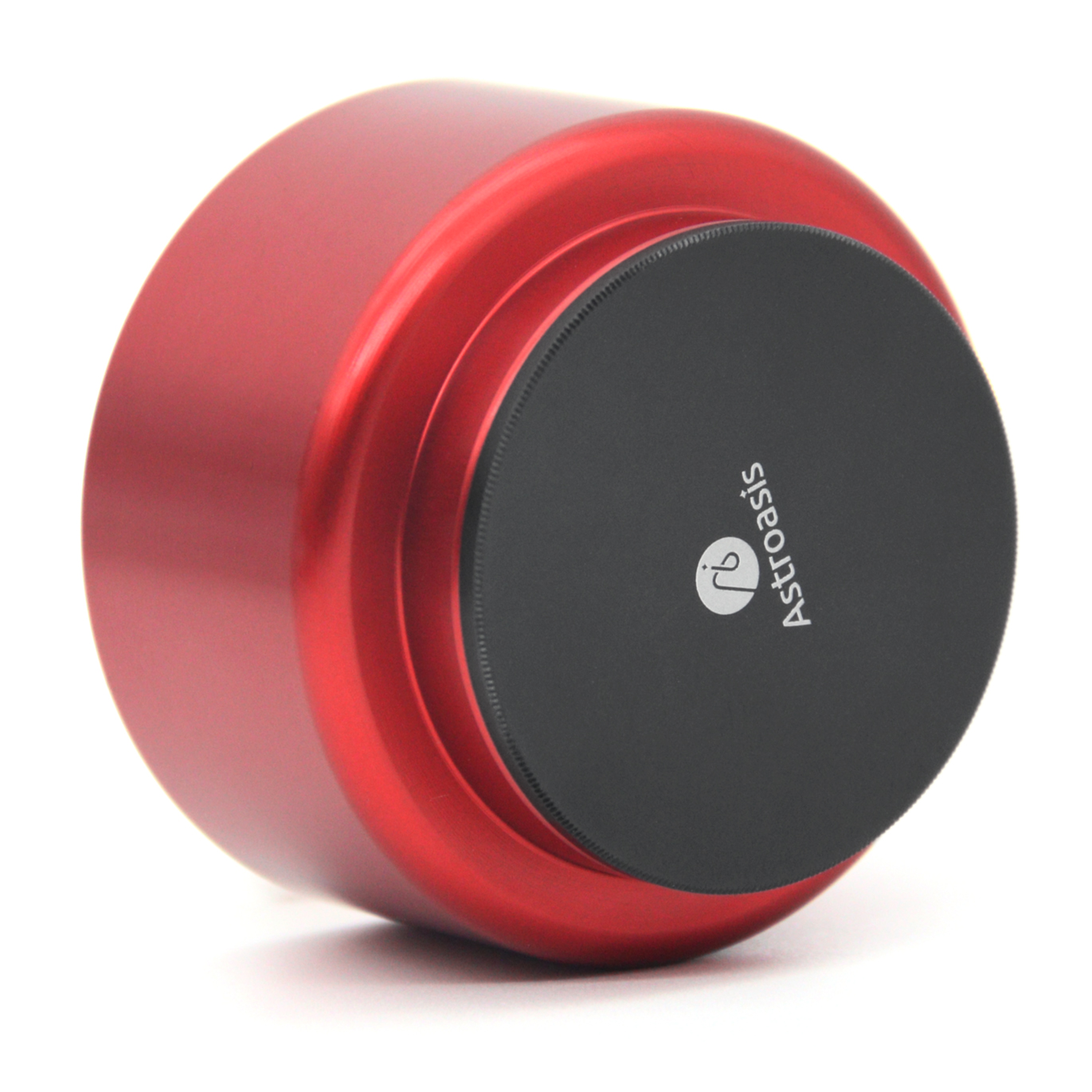
We removed the ST4 guide port, which is not commonly used today. This is just to make the camera look cleaner.
Anti light-leakage
Inside the camera, a black O-ring is used around the sensor to protect light-leakage. And there are no other electronic components between the sensor and the O-ring. The O-ring is placed between the sensor daughter board and the housing for complete and perfect light-leakage protection.
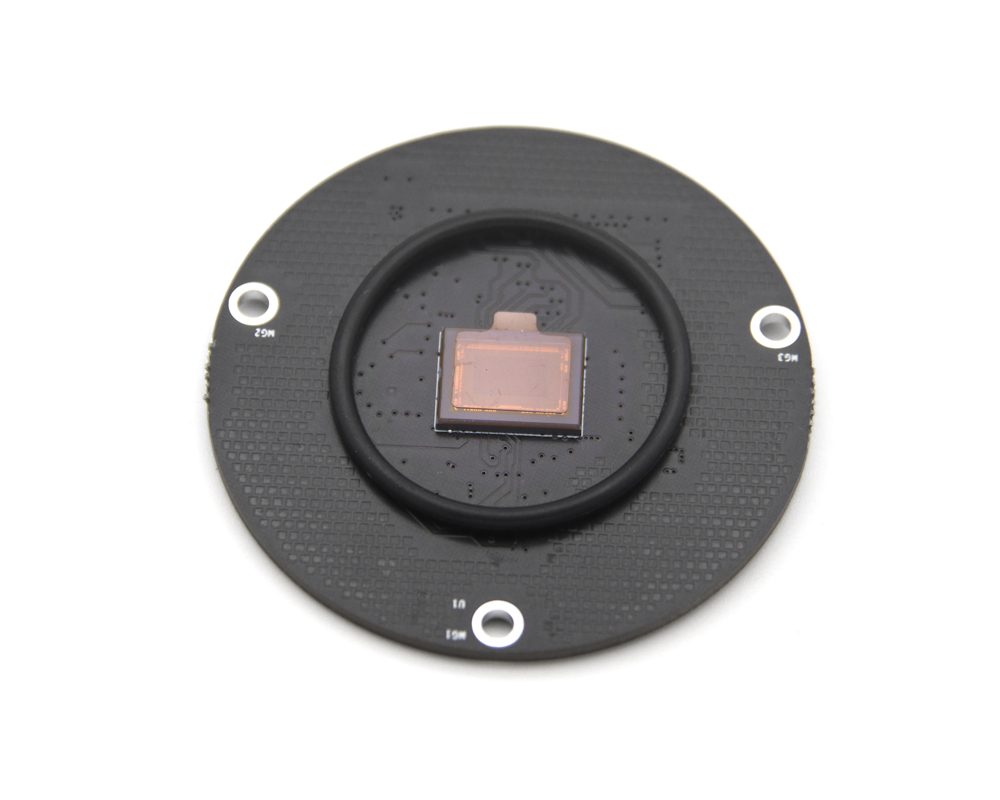
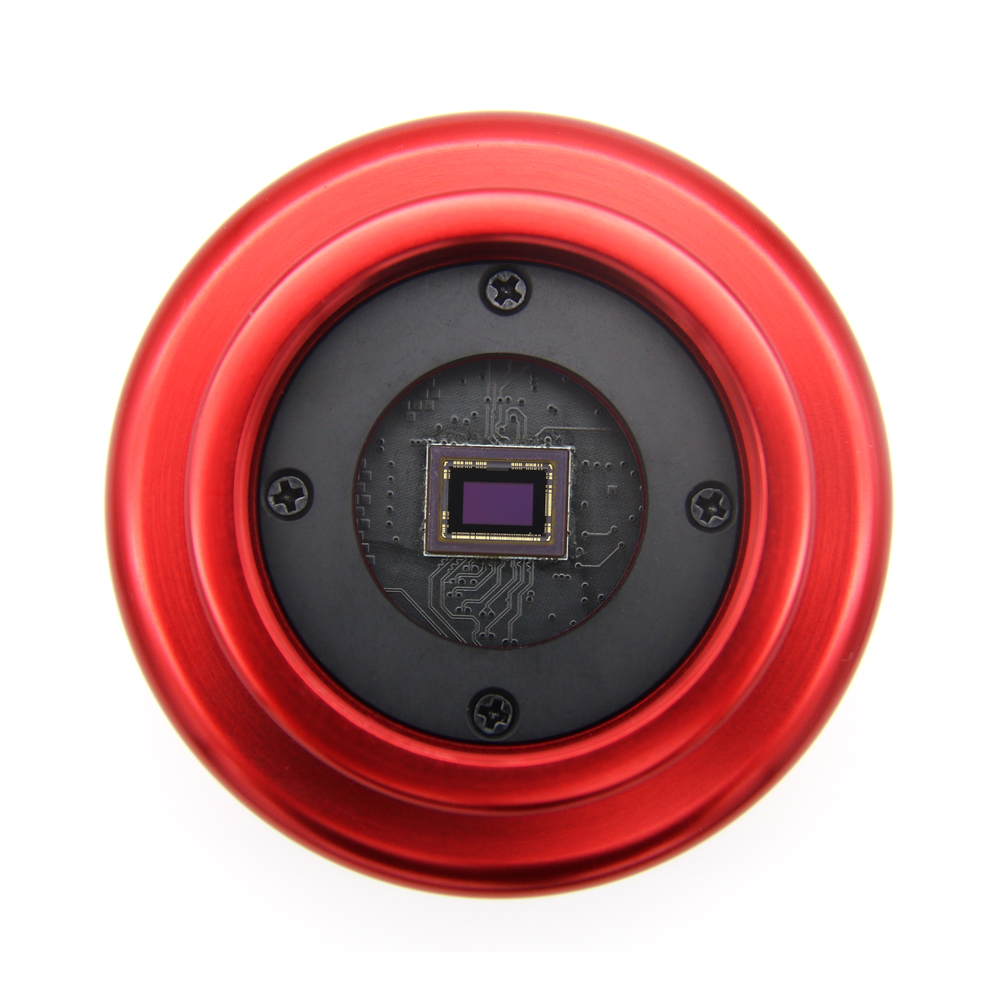
The measured camera parameters are shown in the figure below.
EGain
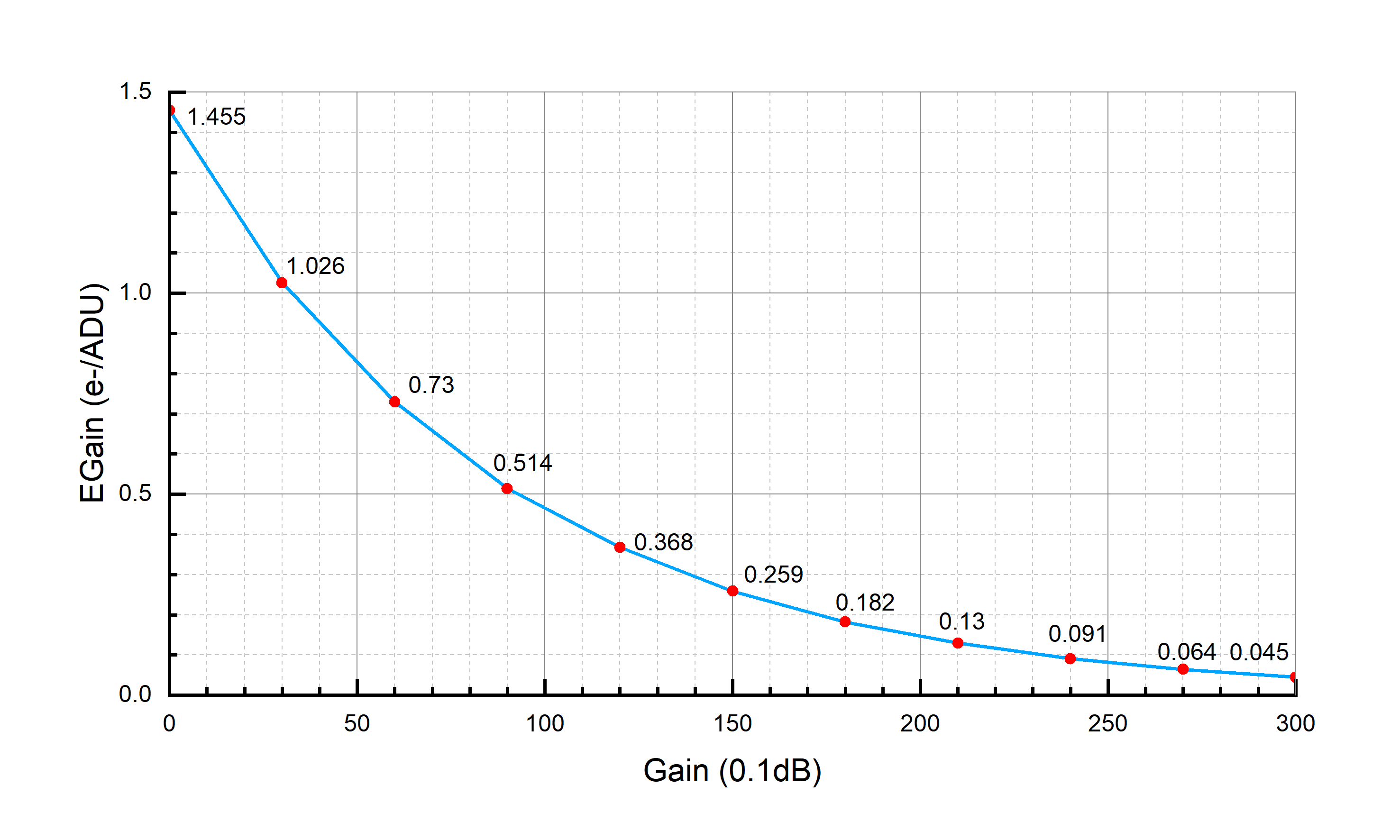
Full Well
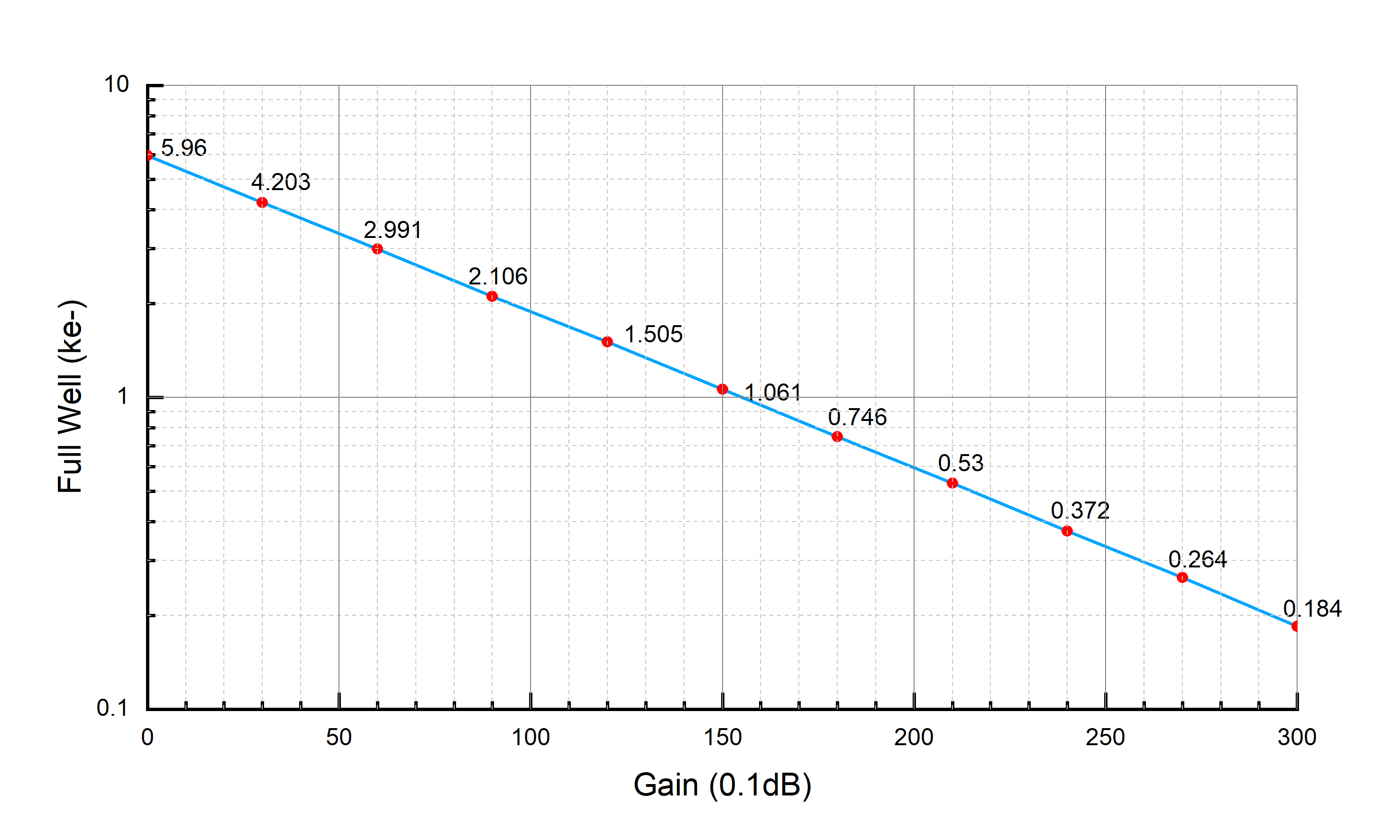
Dynamic Range
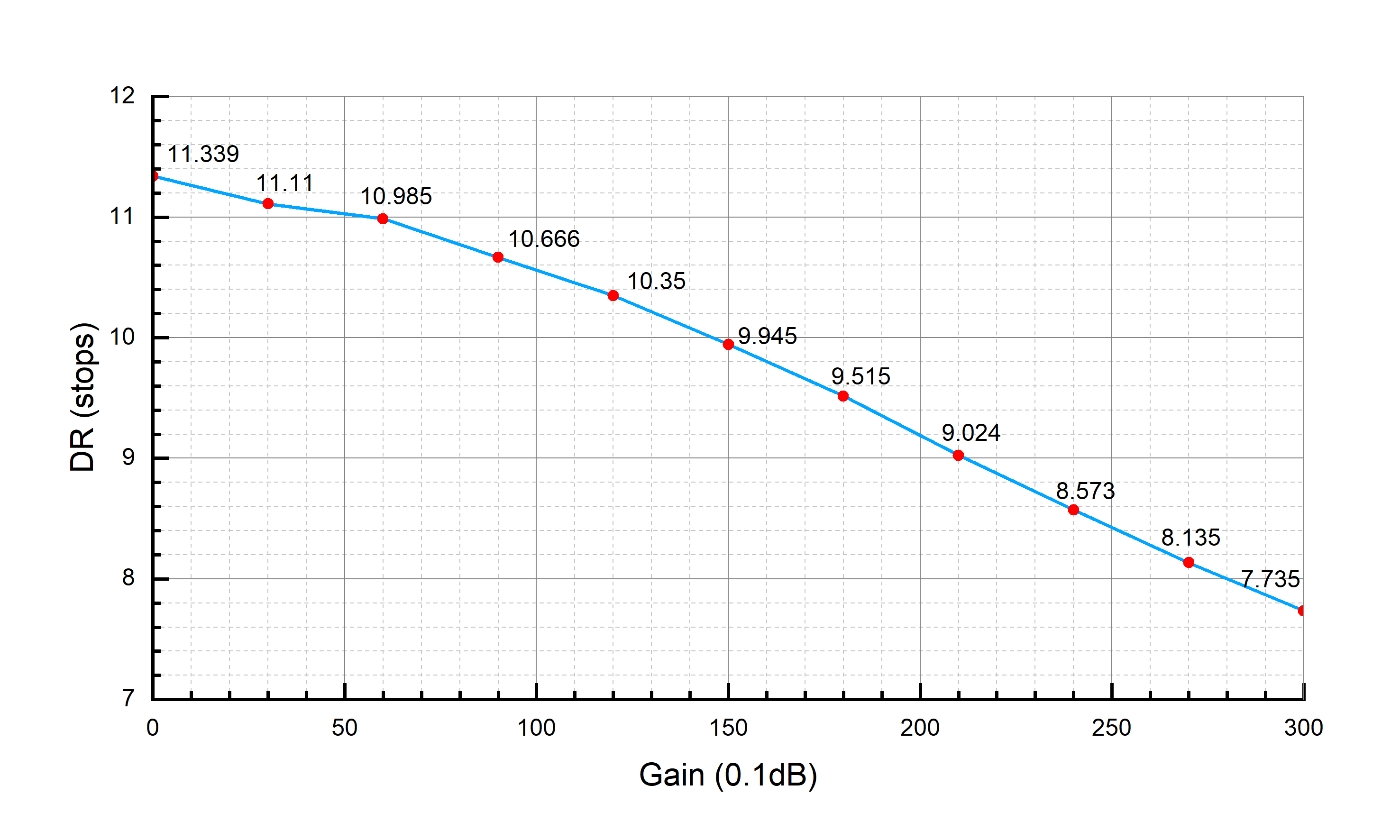
Readout Noise
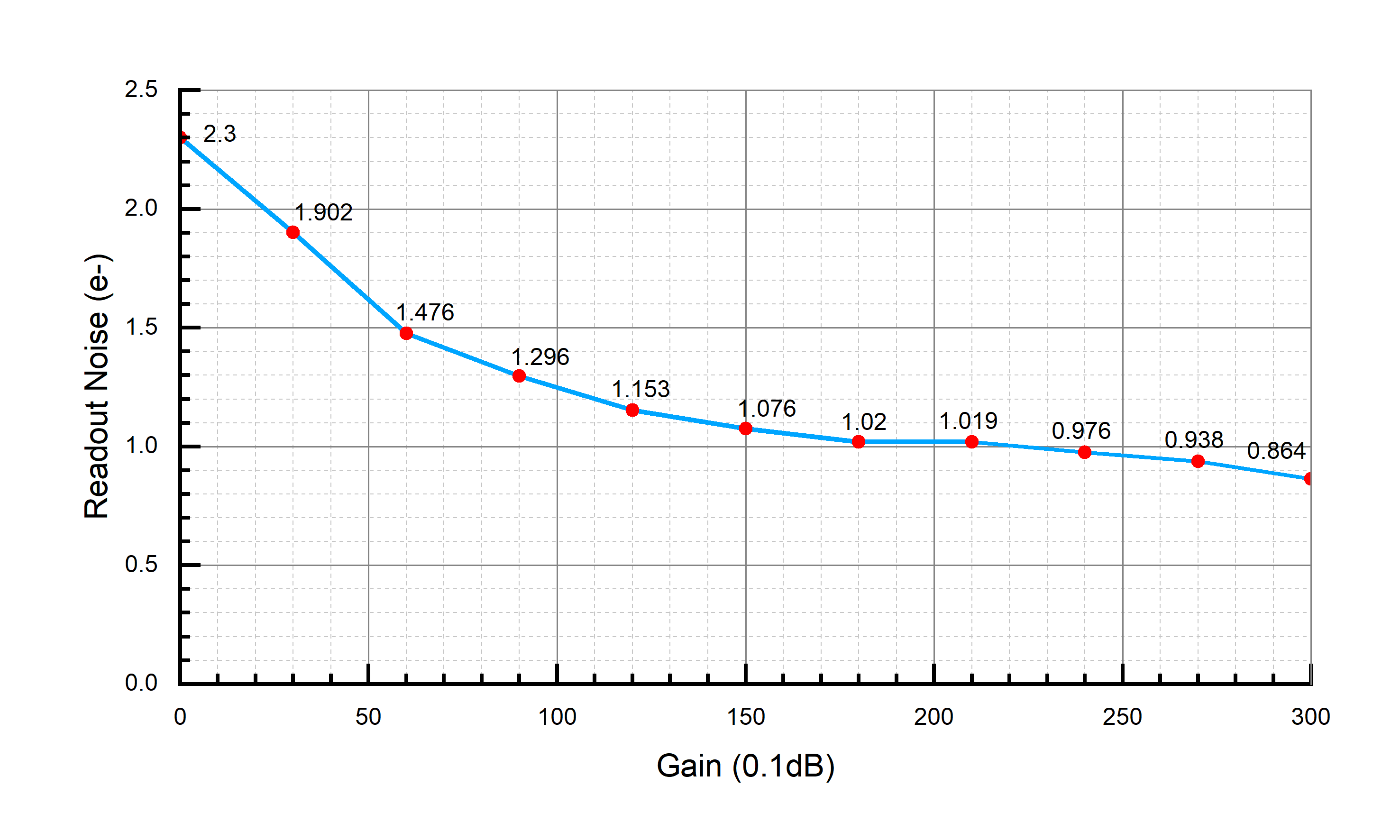
The dimension diagram is shown below.
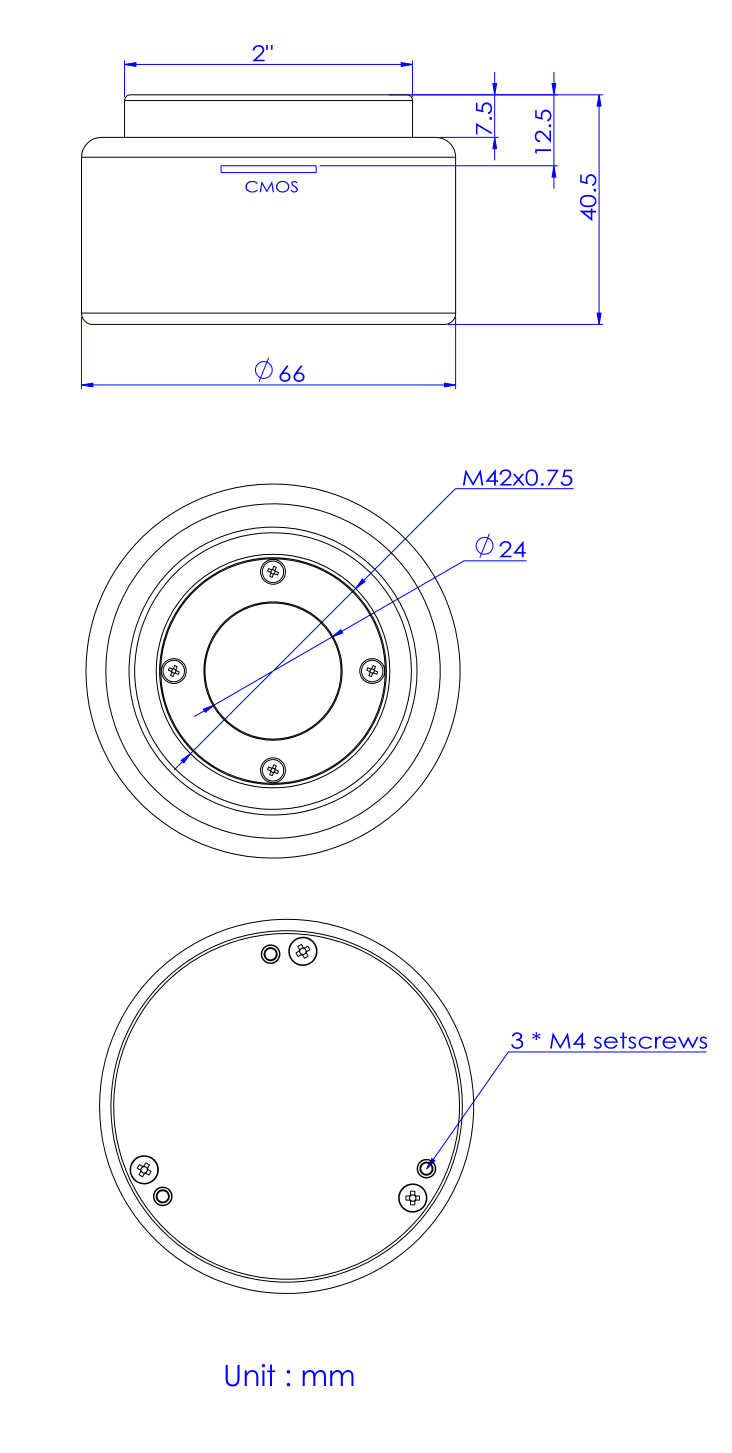
The packing list is shown below.
